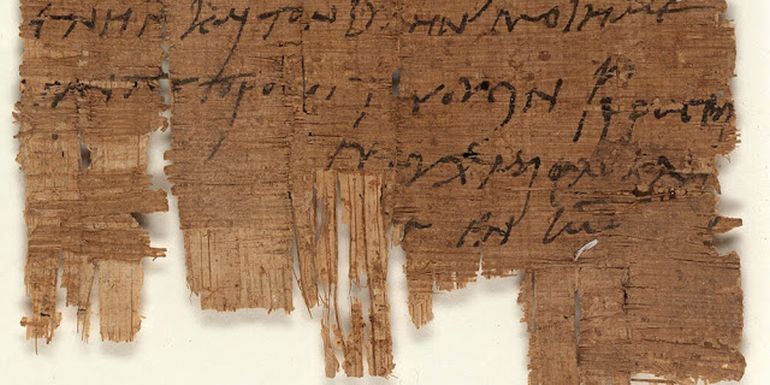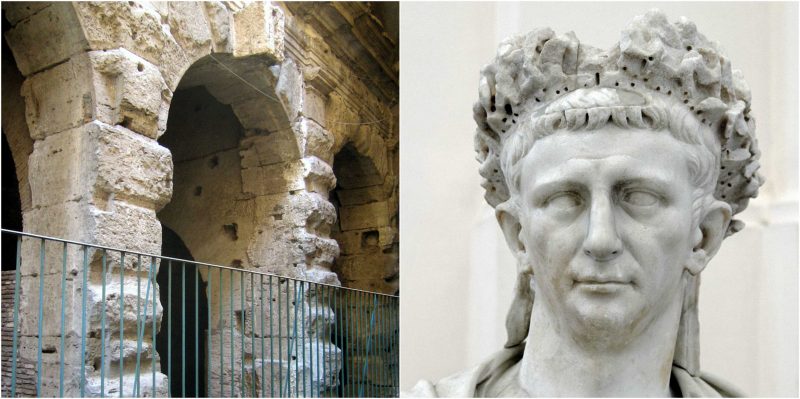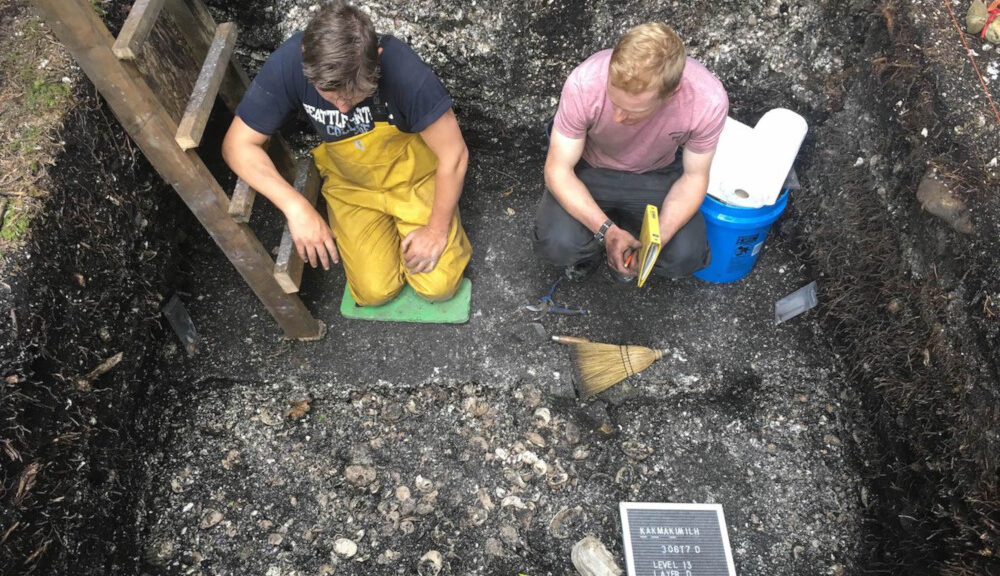A new Viking site could rewrite the story of the ‘Great Heathen Army’

Some 40 years ago, archaeologists excavating the grounds of the English village of Repton stumbled upon a gruesome discovery: a mass grave containing the bodies of more than 250 men, women, and children, many bearing the scars of battle on their bones.
The find lined up with English historical records describing Repton as the location where the “Great Heathen Army” of Vikings hunkered down for the winter of 873-874 CE. It seemed the invaders who had once terrorized the country’s medieval Anglo-Saxon residents had finally been found.
There was just one problem. The only candidate for a fortified winter encampment at Repton was an earthwork enclosure spanning just a handful of acres—far too little to accommodate the thousands of militant Vikings believed to have comprised the Great Army.
Now, a team of researchers from the University of Bristol might have uncovered the solution to Repton’s clown car conundrum: a long-lost partner camp in the nearby village of Foremark, which boasts acreage aplenty. Excavations at Foremark are ongoing, but if the findings pan out, they could help resolve a long-standing debate in Viking history.
“Based on what others had dug up at Repton before, some people [suggested] the Great Army wasn’t as big as everyone thought,” says Mary Beaudry, an archaeologist at Boston University who was not involved in the excavation. “But with this work at Foremark…it could have been much bigger than anyone thought. It opens up an entirely new picture.”

Archaeologist Cat Jarman handling newly uncovered artifacts at Foremark.
Formal excavations at Foremark, a sleepy hamlet just two miles east of Repton, have only recently begun in earnest. But long before the arrival of a team led by Cat Jarman, an archaeologist at the University of Bristol, a group of metal detectorists had unveiled hints of a Viking presence in Foremark.
One of these detectorists, Rob Davis, had already spent more than a decade amassing a trove of trinkets when he reached out to Jarman in November of 2017. Though his collection was by no means comprehensive, Jarman says, it already held what might be the “smoking gun” of a Great Army encampment: a handful of trademark lead gaming pieces—a common relic of Viking encampments strewn throughout Europe.
“In a way, these are the most important artifacts,” Jarman says. “They’re only associated with the Great Army. They’re not pretty or valuable, but they’re specific.”
Joining the gaming pieces were several Islamic dirham coins and trading weights—clear indicators of the Vikings’ global connections. These artifacts, in particular, Jarman says, should serve as reminders that the Vikings were more than the one-dimensional plunderers and pillagers of popular culture. In fact, there’s evidence that Vikings actually started out as merchants, and kept up some of these bartering practices even after taking up arms, trading in local and foreign markets alike.
“There was obviously a violent side to the Vikings,” says team member Mark Horton, an archaeologist at the University of Bristol. “But they were also bringing all sorts of things missing from Anglo-Saxon England at the time. They were the first medieval globalizing forces.”
In the years since Jarman and her colleagues have begun their own research at Foremark. The team hasn’t yet begun excavations at what they believe is the location of Foremark’s main camp, which is privately owned. But the researchers have already hit pay dirt in a neighboring plot of land—in the form of a large, valuable iron plowshare that dates back to the late 9th century. It’s not yet clear who the plowshare belonged to: It could have been hauled in by globe-trotting Scandinavians or abandoned by the unfortunate Anglo-Saxons whose homes they invaded. Either way, this particular find is “pretty amazing,” Horton says.
Many of the artifacts, including those in the metal detectorist’s collection, have yet to be dated more precisely than a ballpark century, however. As such, there’s not yet a guarantee of simultaneous occupation with Repton. But given Foremark’s proximity to Repton, Jarman and others are optimistic that the pieces of the overwintering puzzle could finally be falling into place.
“The findings at Foremark fit into our expectations,” says Doug Bolender, an anthropologist at the University of Massachusetts Boston who was not involved in the work. “In lots of ways, this could allow us to put aside a whole series of caveats and asterisks of the interpretation of the material at Repton…it’s exciting to have a potential site.”
In many ways, Foremark might have been an obvious candidate for a Viking take over. Situated comfortably on the River Trent, the site would have been ideal for everything from docking boats to growing crops. It also carried the appeal of open land: Though the team hasn’t yet determined the exact boundaries of the Foremark camp, the site could have covered as many as 90 acres, vastly outstripping the known enclosures at Repton.
That amount of space could have accommodated the thousands estimated to be in the Great Army—or more. “The whole thing is a massive Viking landscape,” Horton says. “The sheer scale of what we’re finding could indicate that we’re talking about tens of thousands [of people].”

As excavations continue, Jarman is now toying with one last theory: that Foremark was so nice, the Vikings settled it twice.
Not long after leaving their station at Repton, the Great Army began to fragment. After a few final cataclysmic clashes with growing Anglo-Saxon forces, the remaining Vikings scattered. Over time, the two sworn enemies found peace and, eventually, began to integrate, braiding their disparate cultures together. Scandinavian words wove their way into English; Norse gods mingled into local lore.
Along the way, Jarman says, a few Viking veterans might have returned to a familiar haunt at an “old fortification”—perhaps, not by coincidence, the meaning of the root word for “Foremark.”
Even Foremark’s surroundings bear the echoes of encore. The names of nearby villages like Ingleby and Bretby contain similarities to old Norse words. And less than a mile away lies Heath Wood, the region’s only large-scale Viking cremation cemetery—an impractical investment for a single winter’s camp. “You don’t get those names, or a cemetery like that, unless you have a Scandinavian population putting down roots,” Jarman says.
“I think these Viking armies are the people who become the Scandinavian settlers,” she says. “They’ve been invisible in the archaeological record for a long time…but these armies eventually settled into the landscape. This might be how we find that missing link.”




























